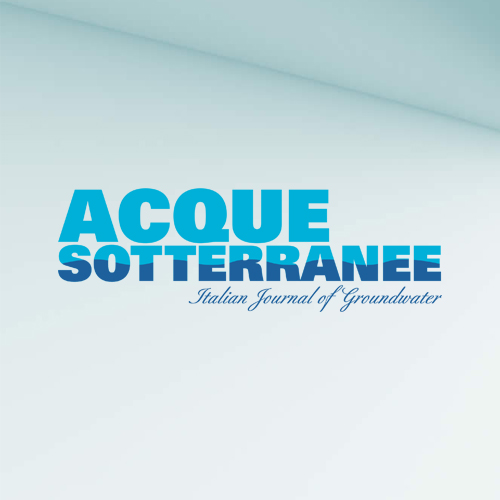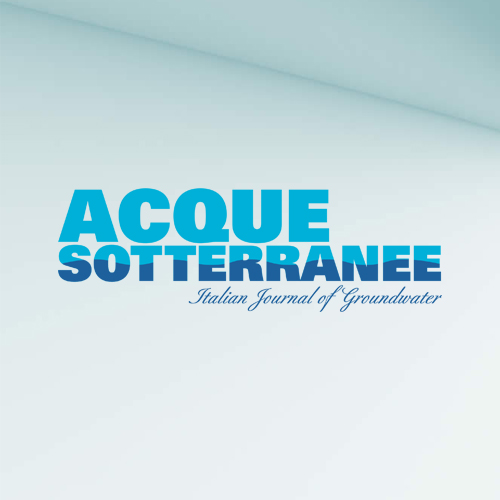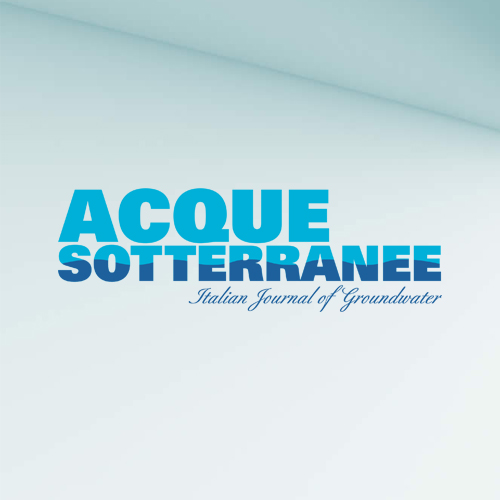Remediation of BTEX contaminated groundwater: best technology assessment between pump&treat and bioremediation by oxygen injection
Submitted: 19 April 2012
Accepted: 15 March 2016
Published: 30 June 2012
Accepted: 15 March 2016
Abstract Views: 880
PDF: 652
Publisher's note
All claims expressed in this article are solely those of the authors and do not necessarily represent those of their affiliated organizations, or those of the publisher, the editors and the reviewers. Any product that may be evaluated in this article or claim that may be made by its manufacturer is not guaranteed or endorsed by the publisher.
All claims expressed in this article are solely those of the authors and do not necessarily represent those of their affiliated organizations, or those of the publisher, the editors and the reviewers. Any product that may be evaluated in this article or claim that may be made by its manufacturer is not guaranteed or endorsed by the publisher.
Similar Articles
- Maurizio Gorla, Roberto Simonetti, Chiara Righetti, Basin-scale hydrogeological, geophysical, geochemical and isotopic characterization: an essential tool for building a Decision Support System for the sustainable management of alluvial aquifer systems within the provinces of Milan and Monza-Brianza , Acque Sotterranee - Italian Journal of Groundwater: Vol. 5 No. 3 (2016)
- Behailu Birhanu, Seifu Kebede, Marco Masetti, Tenalem Ayenew, WEAP-MODFLOW dynamic modeling approach to evaluate surface water and groundwater supply sources of Addis Ababa city , Acque Sotterranee - Italian Journal of Groundwater: Vol. 7 No. 2 (2018)
- Loris Colombo, Statistical methods and transport modeling to assess PCE hotspots and diffuse pollution in groundwater (Milan FUA) , Acque Sotterranee - Italian Journal of Groundwater: Vol. 6 No. 4 (2017)
- Francesca Lotti, John Doherty, The role of numerical models in environmental decision-making , Acque Sotterranee - Italian Journal of Groundwater: Vol. 5 No. 3 (2016)
- Ezio Crestaz, Michele Pellegrini, Peter Schätzl, Tight-coupling of groundwater flow and transport modelling engines with spatial databases and GIS technology: a new approach integrating Feflow and ArcGIS , Acque Sotterranee - Italian Journal of Groundwater: Vol. 1 No. 2 (2012)
- Leonardo Piccinini, Valentina Vincenzi, Alessandro Pontin, Federico Tonet, Heat transport modeling for the design of a low enthalpy open-loop system , Acque Sotterranee - Italian Journal of Groundwater: Vol. 1 No. 3 (2012)
- Gioia Bravini, Matia Menichini, Marco Doveri, Numerical modelling in the coastal aquifer between Burlamacca Canal and Bufalina Ditch, southern Versilia (Tuscany, Italy) , Acque Sotterranee - Italian Journal of Groundwater: Vol. 4 No. 1 (2015)
- Andrea Gigliuto, Chiara Righetti, Roberta Vaccari, Leandro Moretti, Field and modeling studies of aquifer heterogeneity to improve remediation planning in a multilayered aquifer system , Acque Sotterranee - Italian Journal of Groundwater: Vol. 1 No. 2 (2012)
- Giovanni Conte, Pio Di Manna, Rossella Maria Gafà, Lucio Martarelli, Gennaro Maria Monti, Marco Amanti, Sustainable yield of the Colle Quartara carbonate aquifer in the Southern Lepini Mountains (Central Italy) , Acque Sotterranee - Italian Journal of Groundwater: Vol. 5 No. 3 (2016)
- Luca Vettorello, Roberto Pedron, Andrea Sottani, Michele Chieco, Heat exchange modeling in a multilayered karst aquifer affected by seawater intrusion , Acque Sotterranee - Italian Journal of Groundwater: Vol. 4 No. 3 (2015)
You may also start an advanced similarity search for this article.


 https://doi.org/10.7343/as-003-12-0003
https://doi.org/10.7343/as-003-12-0003










